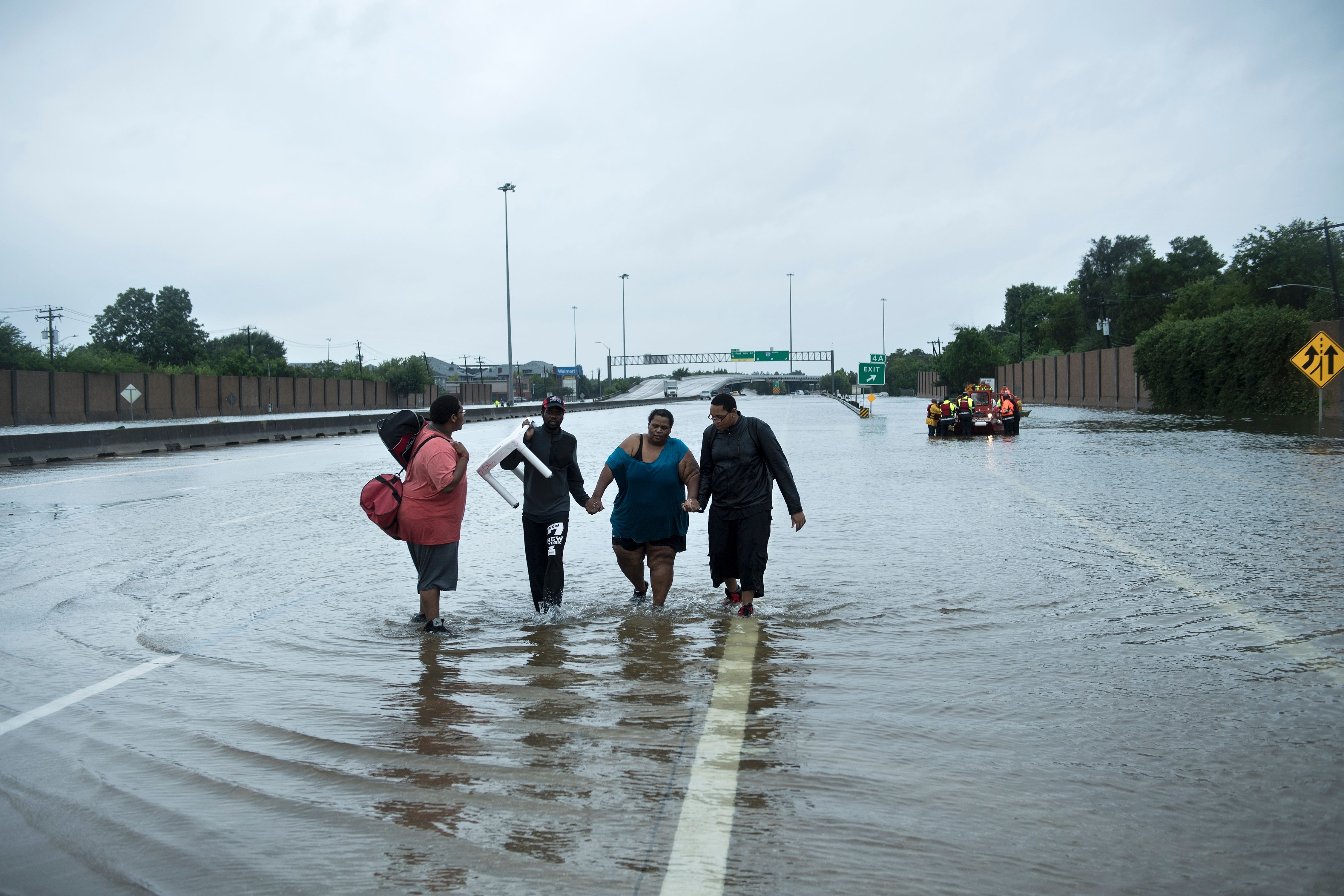How Harvey exposes America's dangerously dilapidated infrastructure
Invest in infrastructure before climate disaster strikes again


Hurricane Harvey is wreaking devastation on Houston and other parts of southern Texas. Rebuilding will cost many tens or perhaps even hundreds of billions of dollars. But what then?
Climate disasters like Harvey illustrate an undeniable fact: American infrastructure is living on borrowed time. We not only need large new investments to bring things up to par, we need a surge of national investment to address the dangers of living in a riskier climate.
One recurrent story in the modern age is poking around some neglected area of American life and discovering some threadbare New Deal project or program that is keeping the country tottering along on two legs. There are literally tens of thousands of examples — from the Lincoln Tunnel (still carrying over 50,000 vehicles daily), LaGuardia Airport (handling over 80,000 passengers daily), or the Grand Coulee Dam (still the fifth-largest source of electricity in the country) on the big end, to an endless slew of roads, schools, and post offices on the small end. During the peak years of the New Deal, one single agency, the Public Works Administration, consumed half the concrete and one-third of the steel output of the entire country doing this stuff.
The Week
Escape your echo chamber. Get the facts behind the news, plus analysis from multiple perspectives.

Sign up for The Week's Free Newsletters
From our morning news briefing to a weekly Good News Newsletter, get the best of The Week delivered directly to your inbox.
From our morning news briefing to a weekly Good News Newsletter, get the best of The Week delivered directly to your inbox.
Among these relics are the two major flood control reservoirs protecting downtown Houston: Addicks Reservoir and Barker Reservoir, authorized by the Rivers and Harbors Act of 1938 and built by the Army Corps of Engineers. After subsequent upgrades and repairs, they are still functioning today — though they are in need of serious work. Back in 2009 they were deemed to be at "extremely high risk of catastrophic failure" due to their age and proximity to downtown, but the Corps has opted for a series of minor patches, not having had the money or initiative to do the necessary total overhaul. Due to the torrential rain from Harvey, both are right now nearly full and are having to release water to keep from overflowing.
All this is a microcosm of the general condition of the United States: coasting on an increasingly rickety foundation our grandparents put up at tremendous effort and expense. Our ruling class, like some addle-brained late Habsburg monarch, is not only ignoring the problem, but denying the very necessity of public investment in the first place.
The simple fact is that the United States could not possibly exist in its hyper-wealthy form — and probably not at all — without tremendous public investment in infrastructure. As societies grow wealthier, they necessarily require more and more sophisticated transportation, communication, and education. Highways, airports, rail networks, telephone and internet, schools, and so forth all require extensive government spending and regulation to function. Indeed, many absolutely vital systems — like the GPS satellite network — are to this day still owned and operated by the federal government.
The libertarian fantasy of the night watchman state was not utterly ludicrous back in the 19th century. But in the 20th, it became so. During the Great Depression, a laissez-faire "self-regulating" market system seized up and collapsed, and orthodox capitalist measures of austerity and tight money only made it worse. It took gargantuan New Deal projects — many of them the largest of their kind ever built up to that point — along with huge war spending, to put the country on a footing where it could continue to grow and develop.
A free daily email with the biggest news stories of the day – and the best features from TheWeek.com
But after a generation of ideological battering, laissez-faire made a comeback in the form of neoliberalism, and public investment was once again deprecated. New projects were often "public-private partnerships" or other such badly camouflaged giveaways to big business. Worse, the investment that did happen under neoliberalism was increasingly slow, incompetently managed, and hideously expensive. After a generation of neglect, critical infrastructure across the country, from Houston dams to the New York subway system, is falling apart.
Today, America is not only looking at the bill coming due for decades of procrastination, we face dramatically increased infrastructure requirements due to the threat of climate change. The entire power generation and transmission system must be rebuilt to slash carbon emissions; it and transportation and communication networks must be overhauled to increase resilience. And as we're seeing in Houston, flood protection and drainage systems must be radically strengthened to handle a hugely increased risk of extreme storms.
Failing to rise to the occasion will only mean spending even more on disaster cleanup. While it may be expensive to build new flood control projects across the nation, it will be much cheaper than rebuilding drowned cities, one after the other. Let's get cracking.
Ryan Cooper is a national correspondent at TheWeek.com. His work has appeared in the Washington Monthly, The New Republic, and the Washington Post.
-
 Has Zohran Mamdani shown the Democrats how to win again?
Has Zohran Mamdani shown the Democrats how to win again?Today’s Big Question New York City mayoral election touted as victory for left-wing populists but moderate centrist wins elsewhere present more complex path for Democratic Party
-
 Millions turn out for anti-Trump ‘No Kings’ rallies
Millions turn out for anti-Trump ‘No Kings’ ralliesSpeed Read An estimated 7 million people participated, 2 million more than at the first ‘No Kings’ protest in June
-
 Ghislaine Maxwell: angling for a Trump pardon
Ghislaine Maxwell: angling for a Trump pardonTalking Point Convicted sex trafficker's testimony could shed new light on president's links to Jeffrey Epstein
-
 The last words and final moments of 40 presidents
The last words and final moments of 40 presidentsThe Explainer Some are eloquent quotes worthy of the holders of the highest office in the nation, and others... aren't
-
 The JFK files: the truth at last?
The JFK files: the truth at last?In The Spotlight More than 64,000 previously classified documents relating the 1963 assassination of John F. Kennedy have been released by the Trump administration
-
 'Seriously, not literally': how should the world take Donald Trump?
'Seriously, not literally': how should the world take Donald Trump?Today's big question White House rhetoric and reality look likely to become increasingly blurred
-
 Will Trump's 'madman' strategy pay off?
Will Trump's 'madman' strategy pay off?Today's Big Question Incoming US president likes to seem unpredictable but, this time round, world leaders could be wise to his playbook
-
 Democrats vs. Republicans: who do the billionaires back?
Democrats vs. Republicans: who do the billionaires back?The Explainer Younger tech titans join 'boys' club throwing money and support' behind President Trump, while older plutocrats quietly rebuke new administration



